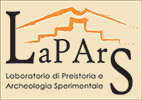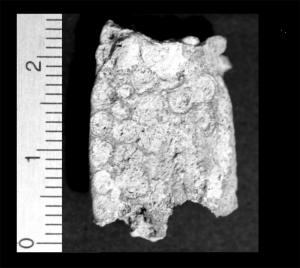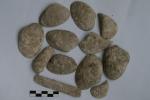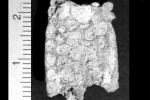Zooarchaeology
The analysis of the fauna recovered from archaeological deposits represents an indispensable field of study in the reconstruction of a paleo-economic model. The research carried out by the group coordinated by Maria Grazia Melis began in 1995 with the study of animal remains found during the excavation of Tomb 3 in the necropolis of Iloi/Ispiluncas (Sedilo). Following this, the material from the Eneolithic village of Su Coddu (Selargius) was examined, and more recently, that of the Eneolithic necropolis at S'Elighe Entosu (Usini). The fauna remains were studied under differing scientific methods with the intention of understanding the various roles of animals in prehistoric societies. The traditional approach to zooarchaeology, based on the macroscopic observation of the remains and comparative analysis in order to identify species, were accompanied by microscopic analysis of bone sections and ancient animal DNA analysis in the zooarchaeology laboratory of the Department of Veterinary Medicine. The examination of thin sections of bone tissue with a microscope makes it possible to view osteons, the shape and spatial disposition of which supply important data both for the identification of species, in the case of minute fragments, as well as ascertaining the age at death, and occasionally to gain information on the mechanical stress exerted on the bone in life, a clue as to whether the animal was wild or domesticated. The analysis of ancient DNA, notwithstanding the difficulties inherent in extraction techniques and amplification, represents one of the most innovative and promising frontiers in the field of zooarchaeology. Through the study of the sequence of the D-loop region and cytochrome b of mitochondrial DNA it is possible to ascertain the "genetic distances" between animal populations from different periods and to retrace the evolutionary stepping stones followed by animals in a given territory. Recent studies run in our laboratory have shown, for example, that Sardinian sheep, starting from the Neolithic up until the present day, have displayed elements of genetic variability, giving proof to the hypothesis that there have been several different waves of immigration over the course of time.



